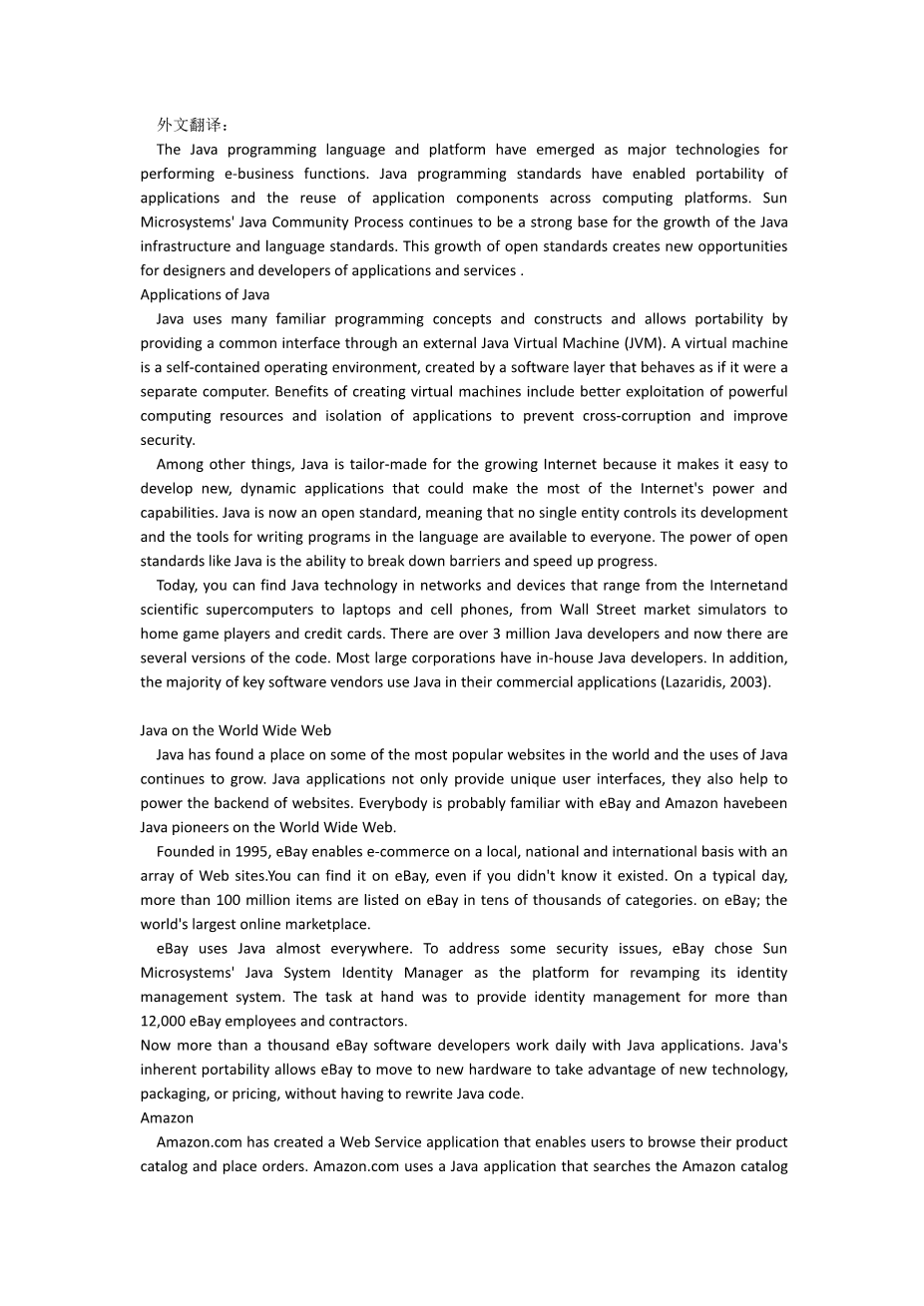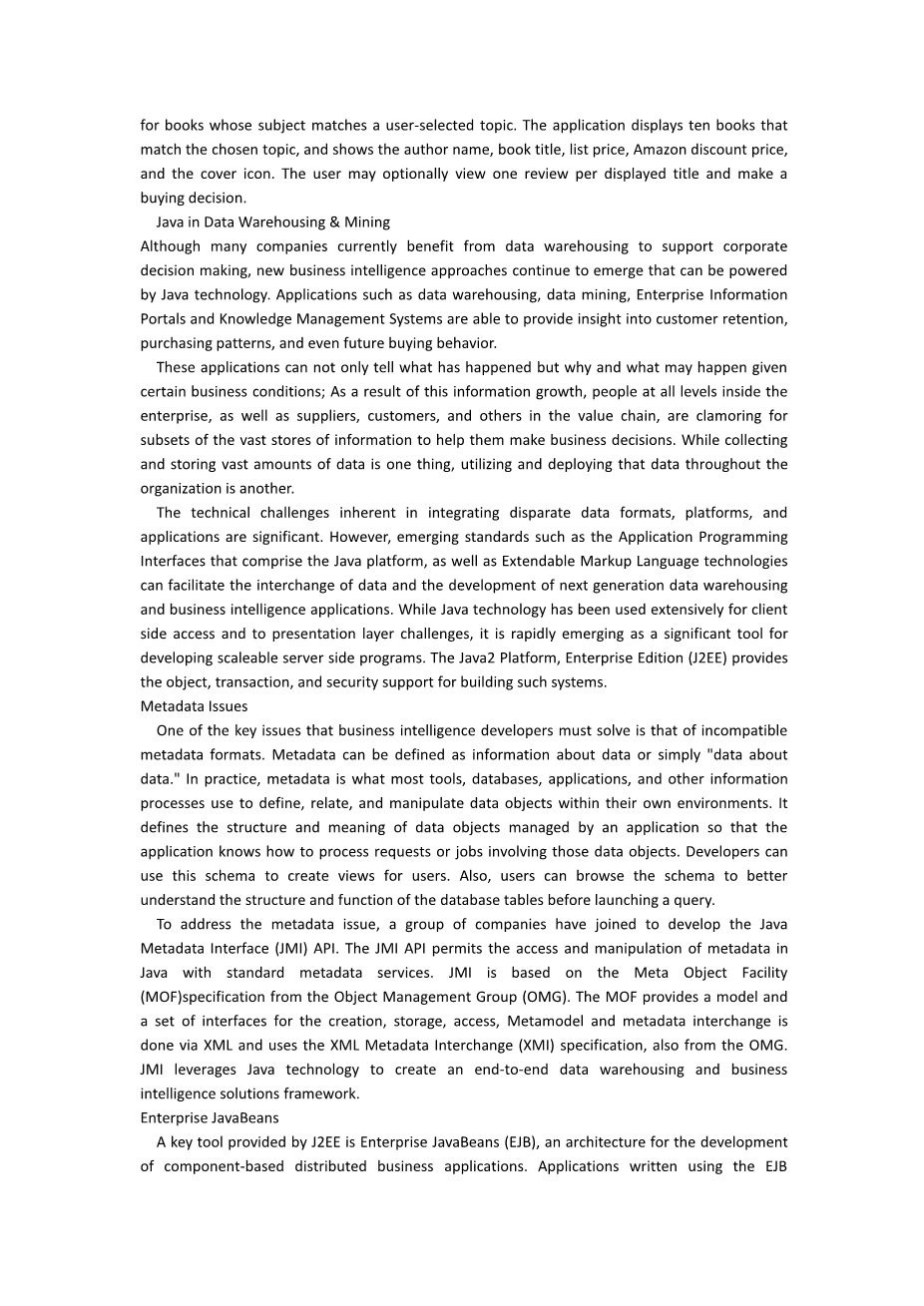学教在线交流平台设计与实现---以《计算思维》课程为例外文翻译资料
2023-08-03 16:45:02
Introduction to Objects
“We cut nature up, organize it into concepts, and ascribe significances as we do, largely because we are parties to an agreement that holds throughout our speech community and is codified in the patterns of our language ... we cannot talk at all except by subscribing to the organization and classification of data which the agreement decrees.” Benjamin Lee Whorf (1897-1941)
The genesis of the computer revolution was in a machine. The genesis of our programming languages thus tends to look like that machine.
But computers are not so much machines as they are mind amplification tools (“bicycles for the mind,” as Steve Jobs is fond of saying) and a different kind of expressive medium. As a result, the tools are beginning to look less like machines and more like parts of our minds, and also like other forms of expression such as writing, painting, sculpture, animation, and filmmaking. Object-oriented programming (OOP) is part of this movement toward using the computer as an expressive medium.
This chapter will introduce you to the basic concepts of OOP, including an overview of development methods. This chapter, and this book, assume that you have had experience in a procedural programming language, although not necessarily C. If you think you need more preparation in programming and the syntax of C before tackling this book, you should work through the Foundations for Java training CD ROM, bound in the back of this book.
This chapter is background and supplementary material. Many people do not feel comfortable wading into object-oriented programming without understanding the big picture first. Thus, there are many concepts that are introduced here to give you a solid overview of OOP. However, other people may not get the big picture concepts until theyrsquo;ve seen some of the mechanics first; these people may become bogged down and lost without some code to get their hands on. If yoursquo;re part of this latter group and are eager to get to the specifics of the language, feel free to jump past this chapter—skipping it at this point will not prevent you from writing programs or learning the language. However, you will want to come back here eventually to fill in your knowledge so you can understand why objects are important and how to design with them.
The progress of abstraction
All programming languages provide abstractions. It can be argued that the complexity of the problems yoursquo;re able to solve is directly related to the kind and quality of abstraction. By “kind” I mean, “What is it that you are abstracting?” Assembly language is a small abstraction of the underlying machine. Many so-called “imperative” languages that followed (such as FORTRAN, BASIC, and C) were abstractions of assembly language. These languages are big improvements over assembly language, but their primary abstraction still requires you to think in terms of the structure of the computer rather than the structure of the problem you are trying to solve. The programmer must establish the association between the machine model (in the “solution space,” which is the place where yoursquo;re modeling that problem, such as a computer) and the model of the problem that is actually being solved (in the “problem space,” which is the place where the problem exists). The effort required to perform this mapping, and the fact that it is extrinsic to the programming language, produces programs that are difficult to write and expensive to maintain, and as a side effect created the entire “programming methods” industry.
The alternative to modeling the machine is to model the problem yoursquo;re trying to solve. Early languages such as LISP and APL chose particular views of the world (“All problems are ultimately lists” or “All problems are algorithmic,” respectively). PROLOG casts all problems into chains of decisions. Languages have been created for constraint-based programming and for programming exclusively by manipulating graphical symbols. (The latter proved to be too restrictive.) Each of these approaches is a good solution to the particular class of problem theyrsquo;re designed to solve, but when you step outside of that domain they become awkward.
The object-oriented approach goes a step further by providing tools for the programmer to represent elements in the problem space. This representation is general enough that the programmer is not constrained to any particular type of problem. We refer to the elements in the problem space and their representations in the solution space as “objects.” (You will also need other objects that donrsquo;t have problem-space analogs.) The idea is that the program is allowed to adapt itself to the lingo of the problem by adding new types of objects, so when you read the code describing the solution, yoursquo;re reading words that also express the problem. This is a more flexible and powerful language abstraction than what wersquo;ve had before.[2] Thus, OOP allows you to describe the problem in terms of the problem, rather than in terms of the computer where the solution will run. Therersquo;s still a connection back to the computer: each object looks quite a bit like a little computer—it has a state, and it has operations that you can ask it to perform. However, this doesnrsquo;t seem like such a bad analogy to objects in the real world—they all have characteristics and behaviors.
Alan Kay summarized five basic characteristics of Smalltalk, the fi
剩余内容已隐藏,支付完成后下载完整资料


英语译文共 9 页,剩余内容已隐藏,支付完成后下载完整资料
资料编号:[613401],资料为PDF文档或Word文档,PDF文档可免费转换为Word




